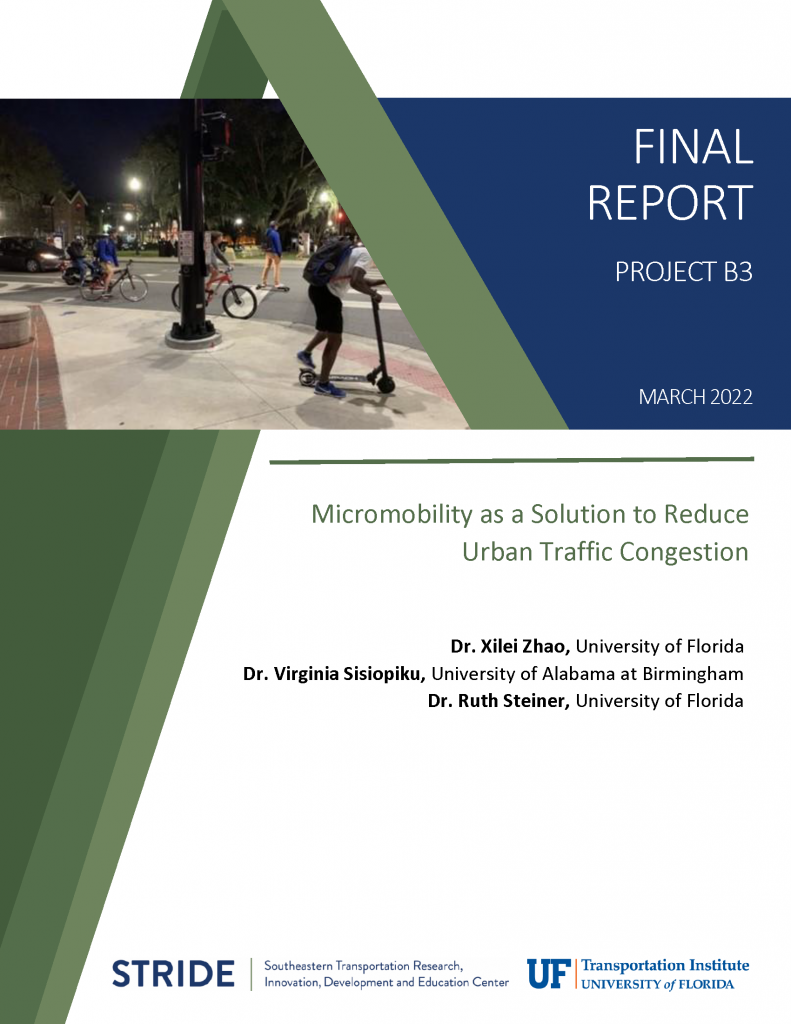Micro-Mobility as a Solution to Reduce Urban Traffic Congestion

Research Team
Xilei Zhao, Ph.D., University of Florida
Virginia Sisiopiku, Ph.D., University of Alabama at Birmingham
Ruth Steiner, Ph.D., University of Florida
Final Technology Transfer Report
Abstract: Micromobility is an innovative transportation strategy that has demonstrated a great potential for congestion mitigation. However, the research on micromobility is very limited in the field of transportation. This project aims to conduct a comprehensive study to analyze, quantify, and understand the impacts of micromobility on congestion reduction and recommend corresponding intervention strategies for stakeholders. We firstly inferred origins and destinations of e-scooter trips in Washington, D.C. based on the General Bikeshare Feed Specification (GBFS) data and modeled the trip origin demand of e-scooter services. The Ordinary Linear Squares (OLS), Lasso, Decision Tree (DT), Random Forest (RF), and Boosting models were used to predict the trip origin demand in census block group level. The RF model had the best performance among the five models regarding root mean squared error (RMSE) and mean absolute error (MAE). Then we used feature importance (FI) and partial dependence plots (PDP) to interpret the RF model. The results showed that the most important category of variable was built environment variables. From PDPs, we also observed nonlinear relationships between the dependent variable and independent variables. After that, we developed an extended module for shared micromobility simulation in MATSim by applying modifications to its carsharing module. We also developed an effective pipeline to generate synthetic student plans by using different real data sources. The updated MATSim framework was utilized to generate realistic day plans for travelers in a case study that considered 500, 750 and 1000 e-scooters on and around the UAB campus. The case study results confirmed that the simulated traffic volumes are lower and travel speeds are higher when e-scooters are available, compared to the base case scenario. Then we discussed the policy related to shared micromobility operation and developed a decision-support tool that can collect and analyze the e-scooter-related data. Lastly, we created a new decision-support tool to assist cities to better monitor and analyze e-scooter usage and gather inputs from residents. We also presented policy recommendations on regulatory structure, general terms and conditions, operations oversight, public engagement, data, and infrastructure. This project provided rich insights of key factors associated with micromobility demand, examined the potential impact of deployment of e-scooters and other micromobility options on traffic operations, and generated new knowledge for stakeholders to facilitate planning micromobility policies and practices.